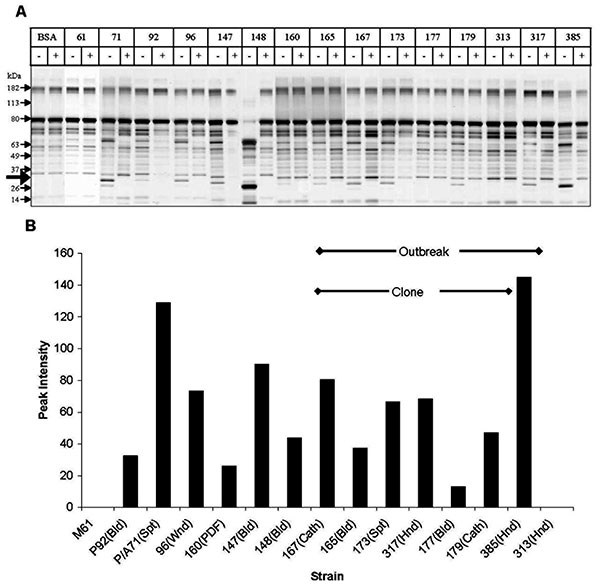Volume 10, Number 6—June 2004
Research
Candida parapsilosis Characterization in an Outbreak Setting
Figure 5

Figure 5. Secretory aspartic protease (SAP) expression by Candida parapsilosis clinical isolates. Panel A shows representative sodium dodecyl sulfate–polyacrylamide gel electrophoresis of various C. parapsilosis isolates. M, molecular weight marker lane; BSA, bovine serum albumin alone; other lanes show number of isolate; and +, supernatant plus protease inhibitor cocktail. Protease activity is evident from the appearance of lower molecular weight bands representing cleavage products. Thick arrow indicates the 20-kDa protein appearing after protease digestion. (For details of methods used see text.) Panel B shows densitometric scanning analysis of SAP activity. Strains 177 and 179 were included to demonstrate the heterogeneity in SAP production within the clonal strains. Cath, catheter; Bld, bloodstream; Spt, sputum; Hnd, hand; Wnd, wound; Pdf, peritoneal dialysis fluid.